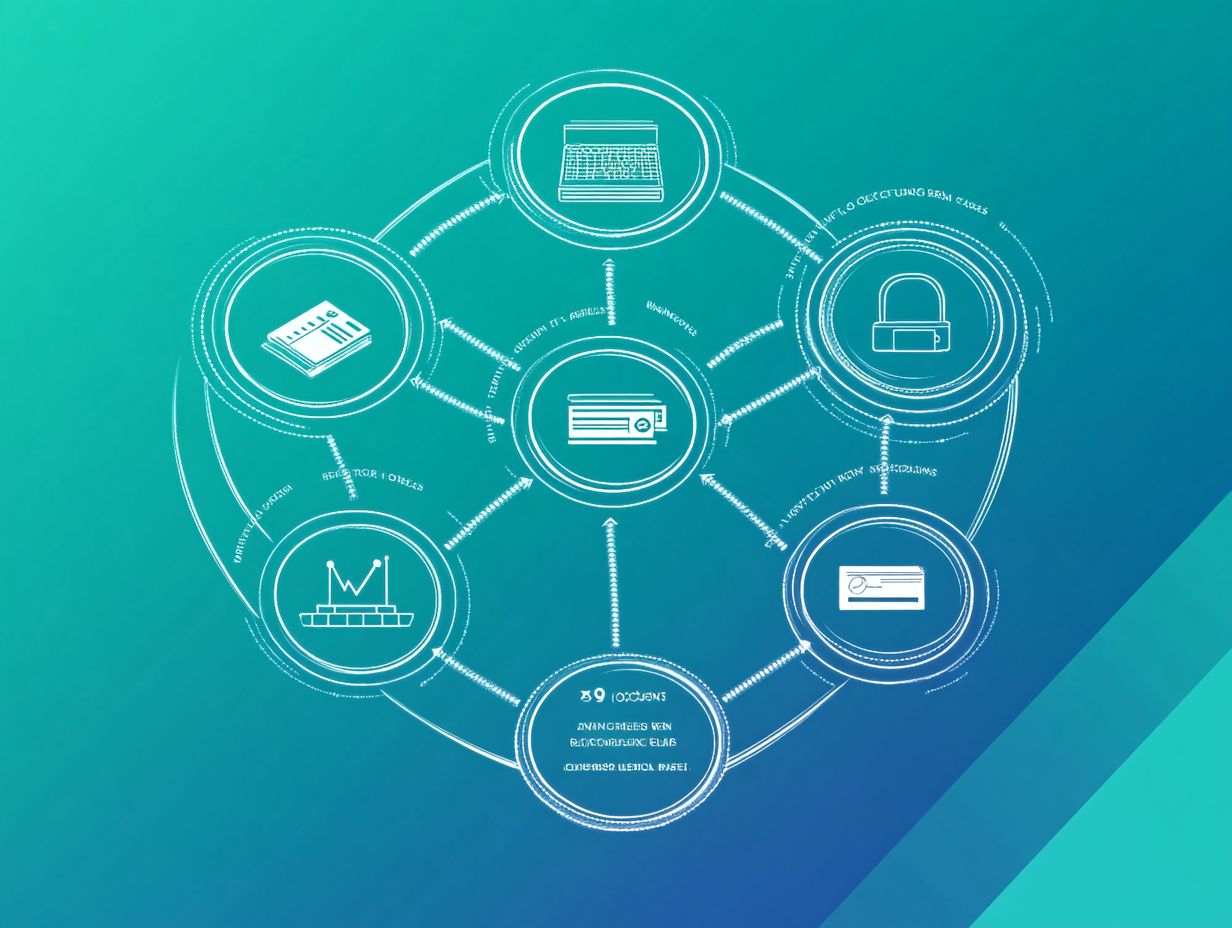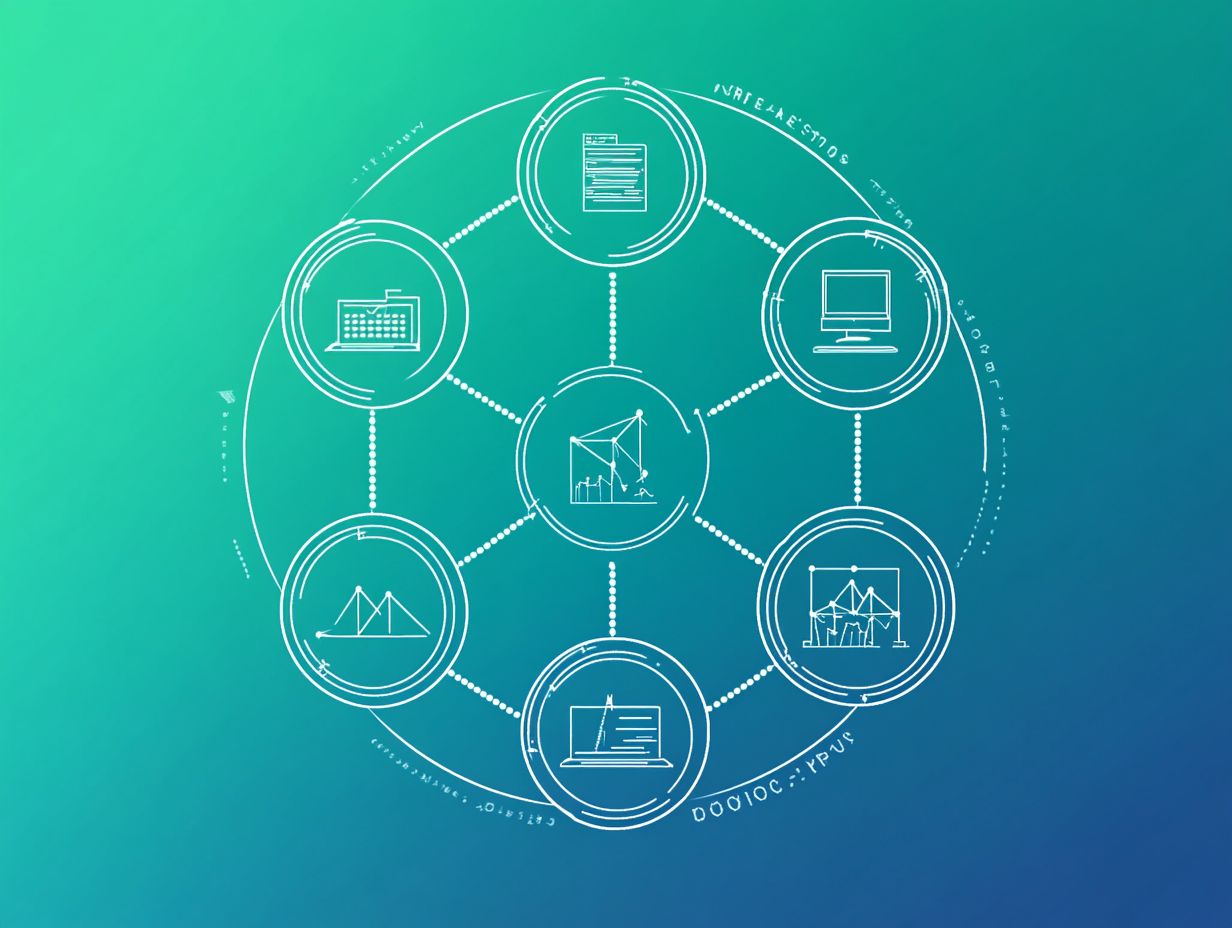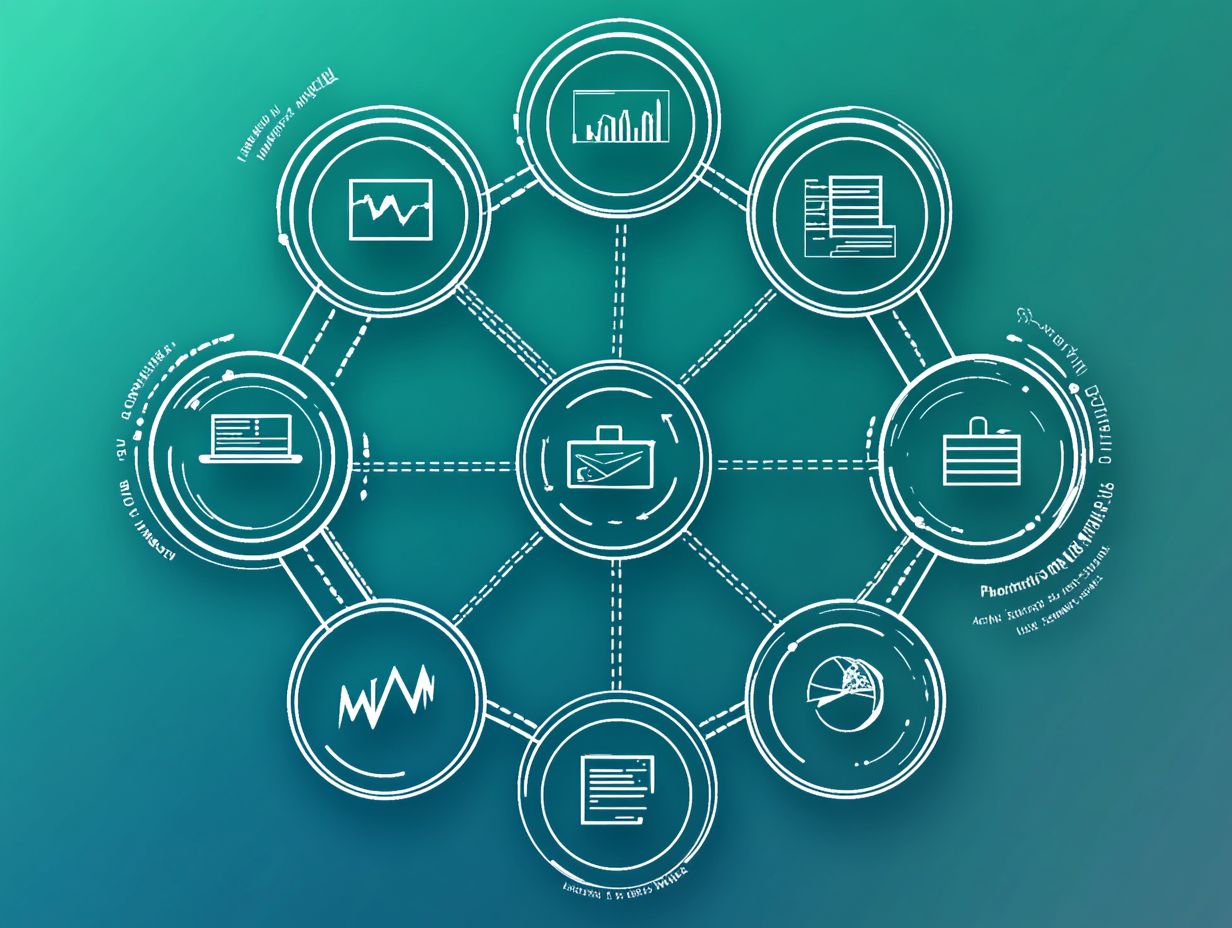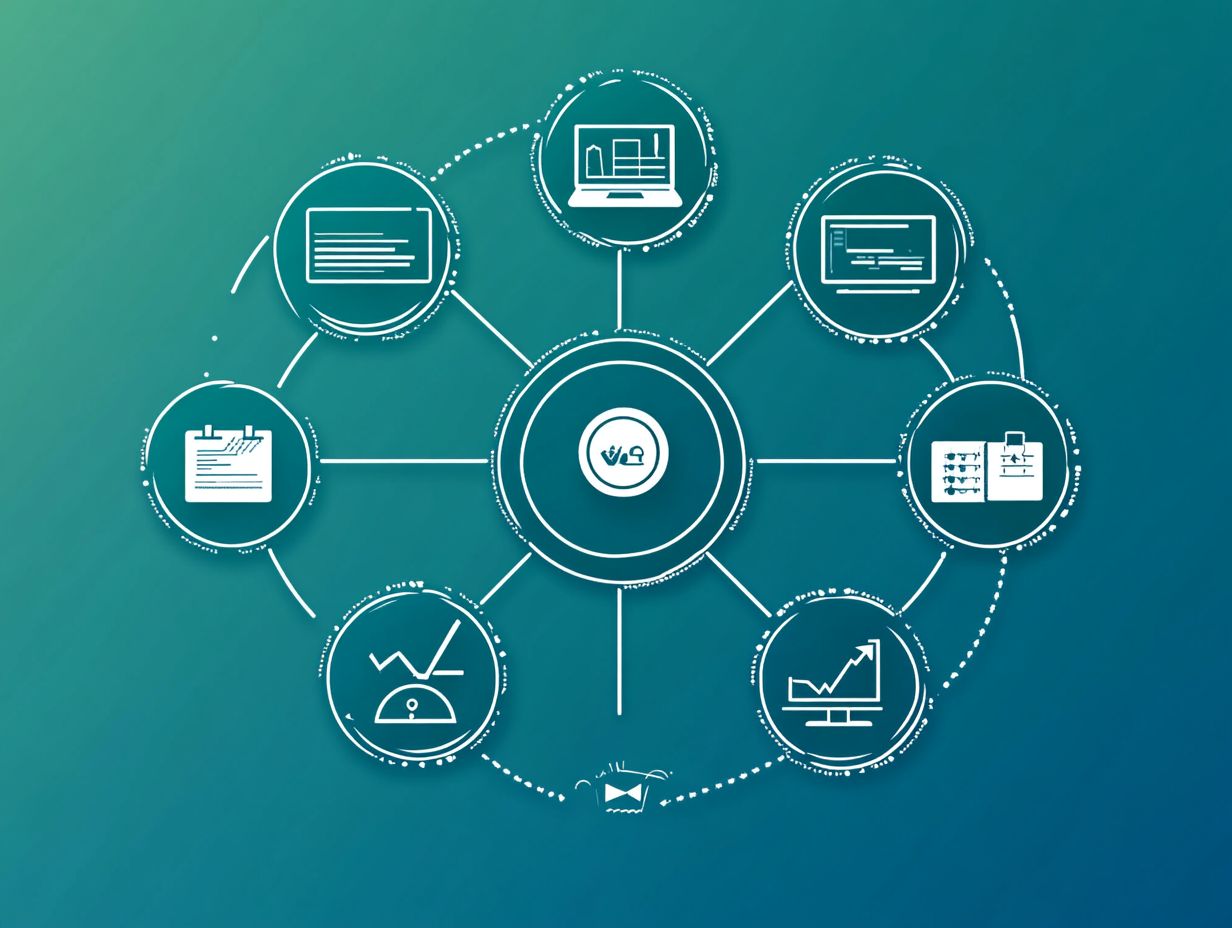the key elements of a vulnerability assessment
In today’s rapidly evolving landscape, vulnerability assessments have become indispensable for organizations determined to protect their assets.
These assessments pinpoint potential weaknesses and evaluate their impacts and probabilities, empowering you to make informed decisions.
This article delves into the essential components of a vulnerability assessment, outlining how to conduct one effectively and the various types of vulnerabilities physical, cyber, and human-related that require your attention.
It also highlights how to leverage the results to implement robust mitigation strategies and maintain ongoing security.
Get ready to dive in to discover how vulnerability assessments can strengthen your defenses and safeguard what matters most.
Contents
Key Takeaways:

- A vulnerability assessment is crucial for identifying risks and potential impacts, allowing for proactive measures to be taken.
- The key elements of a vulnerability assessment include identifying vulnerabilities, analyzing impacts, and assessing likelihood and severity.
- Once a vulnerability assessment is conducted, it is important to take action by implementing mitigation strategies and continuing to monitor and update for any changes.
The Importance of Vulnerability Assessments
Vulnerability assessments are an essential part of a strong IT security plan. They allow you to identify and address security vulnerabilities before they fall into the hands of malicious hackers.
By undertaking thorough vulnerability assessments, you can significantly enhance your security posture. This also ensures compliance with regulations and safeguards your critical assets from ever-evolving cyber threats.
This proactive approach requires thorough risk analysis. Act now to craft effective plans that minimize risks!
Understanding the Purpose and Benefits
Understanding the purpose and benefits of vulnerability assessments is crucial for organizations striving to bolster security against cyber threats.
These assessments form a vital foundation for crafting effective remediation plans. They identify weaknesses within your IT systems and indicate where resources should be allocated.
For instance, if you discover a vulnerability in an outdated software version, a sound remediation strategy would be to update that software immediately.
Vulnerability assessments also play a key role in ensuring compliance with robust security policies. They can reveal areas of non-compliance that require urgent attention.
When paired with penetration testing a type of testing that simulates attacks to check how secure your defenses are these assessments provide a comprehensive view of your organization s security posture, ultimately enhancing your overall risk analysis and decision-making capabilities.
Key Elements of a Vulnerability Assessment
The key elements of a vulnerability assessment involve identifying security vulnerabilities, analyzing potential impacts, and evaluating likelihood and severity. It’s also crucial to consider understanding the limitations of vulnerability assessments for a comprehensive approach.
This process enables you to prioritize risks effectively, ultimately shaping your organization’s vulnerability management strategy.
Identifying Vulnerabilities
Identifying vulnerabilities is a fundamental first step in any vulnerability assessment. Utilizing vulnerability assessment tools for non-technical users enables you to pinpoint security weaknesses across your information systems and applications.
Effective methods, such as vulnerability scanning, play a crucial role in this process.
By utilizing automated tools, you can frequently scan your networks and systems for known vulnerabilities. This ensures you remain vigilant against emerging threats.
Along with scanning, asset discovery helps you understand what devices and applications are present within your environment.
This creates an accurate inventory that is essential for effective vulnerability management.
Recognizing application vulnerabilities is particularly significant. These weaknesses often serve as gateways for malicious actors, compromising sensitive data and undermining your overall security.
By addressing these vulnerabilities promptly, you not only enhance your defense mechanisms but also cultivate a culture of proactive security awareness.
Analyzing Potential Impacts

Analyzing the potential impacts of identified vulnerabilities is essential for understanding how security weaknesses can lead to data breaches or expose gaps in the threat landscape. This evaluation uses risk analysis techniques that assess both the likelihood of threats and their potential consequences.
By categorizing risks based on severity, you can prioritize which vulnerabilities need immediate attention or remediation. This ensures that your resources are allocated effectively.
Such analysis aids in compliance with industry regulations. Organizations are often required to demonstrate active steps in safeguarding sensitive data. Understanding the broader implications of these vulnerabilities strengthens your organization s security posture and enhances its reputation among stakeholders and customers, cultivating trust and confidence.
Assessing Likelihood and Severity
Assessing the likelihood and severity of identified vulnerabilities is crucial for effective risk assessment within your vulnerability management framework. This process helps you determine where to allocate resources efficiently, ensuring critical threats are addressed without delay.
By analyzing potential security incidents through various metrics, you gain insights into the impact these vulnerabilities may have on your operations and data integrity. Implementing comprehensive security protocols creates a strong foundation for protecting your sensitive information and informs your risk prioritization techniques, essential for crafting a meaningful remediation strategy.
Understanding how to prioritize risks is crucial. It helps you act swiftly to mitigate threats and protect your assets!
Conducting a Vulnerability Assessment
Conducting a vulnerability assessment requires a meticulous approach. This includes penetration testing, vulnerability scanning, and in-depth security audits. For nonprofit organizations, a tailored vulnerability assessment can reveal security weaknesses and elevate your risk management practices.
Step-by-Step Process
Conducting a vulnerability assessment for educational institutions involves four key stages: planning, execution, analysis, and reporting. By leveraging automated tools throughout, you can significantly enhance efficiency and accuracy.
In the planning phase, establish clear objectives and define the scope of your assessment. This foundational step sets the tone for what lies ahead. Utilizing tools like vulnerability scanners can streamline discovering potential security weaknesses across various systems and applications, enabling you to identify areas that warrant closer scrutiny.
During the execution phase, automated testing tools conduct scans to evaluate configurations, software versions, and known vulnerabilities against extensive databases. This systematic approach ensures nothing slips through the cracks.
Once the scans are complete, the analysis phase allows you to prioritize the identified vulnerabilities based on their risk levels. By leveraging metrics such as Common Vulnerability Scoring System (CVSS) scores, you can make informed decisions about where to focus your efforts.
Finally, in the reporting phase, automation plays a pivotal role in generating comprehensive reports that summarize your findings and recommend tailored remediation strategies. This is crucial for effective patch management and overall risk mitigation, ensuring a robust security posture for your organization.
Types of Vulnerabilities to Consider
When conducting a vulnerability assessment: a tool for risk management, consider various types of vulnerabilities, including application vulnerabilities, network security gaps, cloud vulnerabilities, and wireless vulnerabilities. Each category presents unique challenges and risks requiring your attention.
Start your assessment today to secure your organization!
Physical, Cyber, and Human-Related Vulnerabilities

Physical, cyber, and human-related vulnerabilities present substantial risks to your organization. Comprehensive strategies are necessary to mitigate threats from external cyber attacks and insider risks, such as social engineering.
To effectively address these vulnerabilities, you must adopt a multifaceted approach. This includes installing strong physical security systems like access controls and surveillance systems, essential for protecting both your facilities and sensitive data.
On the cyber front, your security protocols should incorporate advanced firewalls and intrusion detection systems to defend against online attacks. However, don’t overlook the human element employees often unwittingly become the weakest link in your security chain.
Invest in training programs to boost your staff’s skills and confidence in recognizing threats and responding appropriately. This proactive approach fosters a more resilient security culture within your organization.
Utilizing Vulnerability Assessment Results
Effectively utilizing vulnerability assessment results requires you to develop a comprehensive remediation plan. Implement continuous security monitoring and refine your security frameworks to proactively address any identified vulnerabilities.
This strategic approach ensures that your defenses remain strong and adaptable in the face of evolving threats.
Implementing Mitigation Strategies
Implementing mitigation strategies based on your vulnerability assessment findings is vital to reduce risks now and enhance security across your organization’s protocols. Consider a variety of strategies, such as patch management, to address software vulnerabilities swiftly, minimizing potential exploits.
Regular training sessions for your employees help cultivate a security-conscious culture, empowering your team to recognize and respond appropriately to potential threats. Conducting continuous monitoring and audits helps you identify new vulnerabilities in real-time, enabling you to adjust your defenses proactively.
Ultimately, ongoing risk mitigation is essential for maintaining a robust security posture. It not only addresses existing weaknesses but also anticipates future threats, fostering a dynamic and resilient security framework within your organization.
Continuing Monitoring and Updates
Continuously monitoring and updating your security measures after a vulnerability assessment is essential for ensuring they effectively combat emerging threats and meet regulatory requirements.
These practices are vital for protecting sensitive information. They allow your organization to respond quickly to new vulnerabilities as they arise. Regular monitoring helps you pinpoint any potential weaknesses in your current security framework, while integrating patch management ensures that all systems are updated without delay.
By adopting this approach, you reduce the risk of security incidents and align your practices with regulatory standards. This nurtures a culture of accountability and trust. This proactive strategy ultimately fortifies your overall security posture, safeguarding your valuable assets from malicious actors.
Frequently Asked Questions
What are the key elements of a vulnerability assessment?

The key elements of a vulnerability assessment are identification, analysis, prioritization, remediation, monitoring, and reporting.
Why is identification an important element of vulnerability assessment?
Identification involves identifying all the potential vulnerabilities in a system or network. This is a crucial first step to understanding the scope and severity of the risks.
How does analysis play a role in a vulnerability assessment?
Analysis involves evaluating the identified vulnerabilities and assessing their impact on the system or network. This helps in understanding the potential consequences and determining the best course of action.
What is the significance of prioritization in a vulnerability assessment?
Prioritization ranks identified vulnerabilities by severity. This approach helps you focus on the most critical issues first.
Why is remediation an essential part of a vulnerability assessment?
Remediation means fixing the identified vulnerabilities. This step reduces the risk of attacks and bolsters your overall security.
How do monitoring and reporting contribute to a vulnerability assessment?
Regular monitoring keeps you ahead of new vulnerabilities. It ensures that your fixes are working effectively.
Reporting documents the findings and recommendations. This information is vital for stakeholders and future reference.






